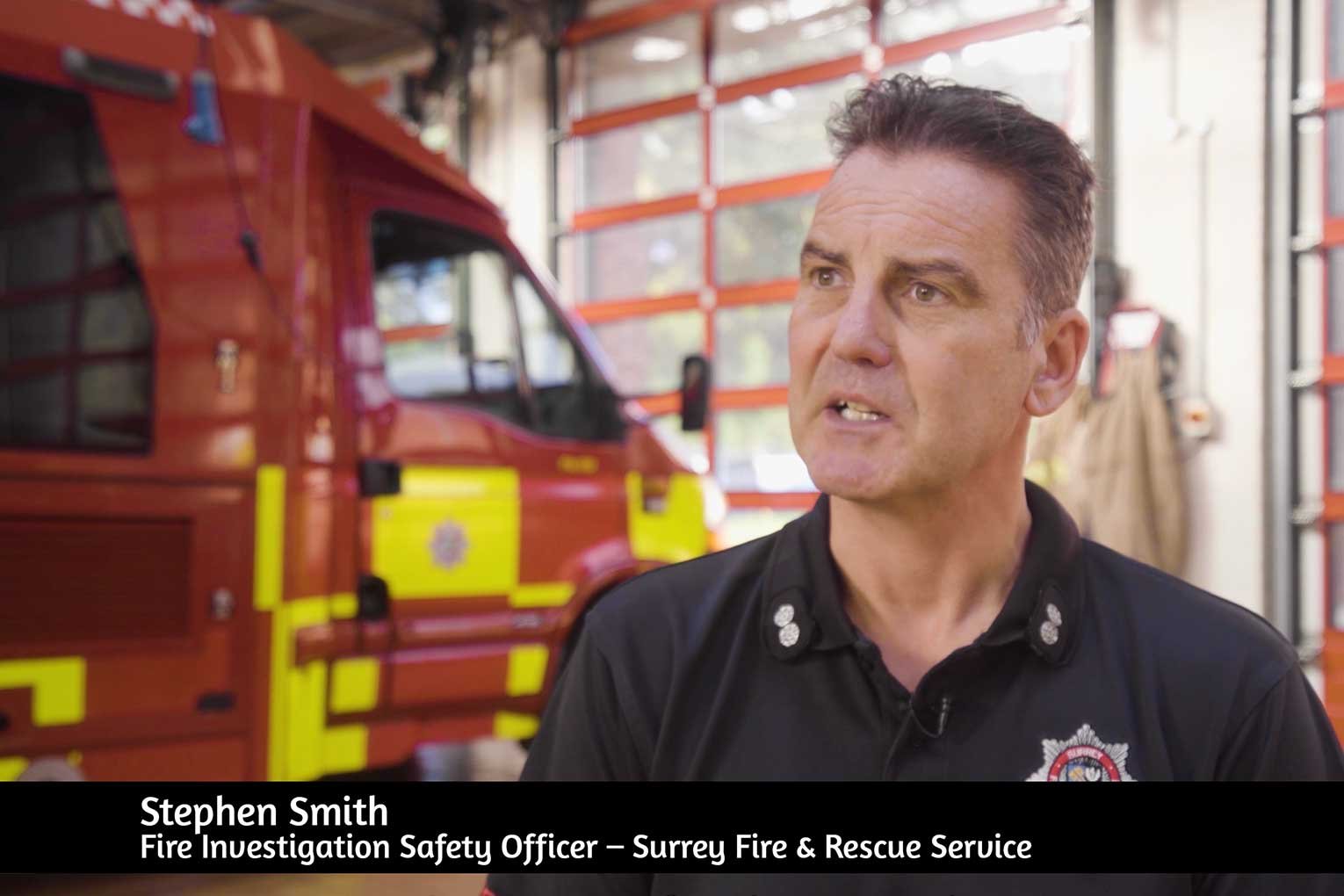Ten Tips for Unlocking Emotional Stories in Interviews
When interviewing people on the front line of our public services, getting to what they really feel can be tricky. Especially when they’re men.
Whether you’re a paramedic, police officer or firefighter, you can’t escape the adrenalin rush of the 999 call. An emergency is happening right now, and you’re going to be first on the scene. You don’t know what you might find.
You’ll likely encounter traumatised people and possibly danger. Objectively not good things. But the buzz of receiving the call, getting in the vehicle and driving at speed makes you excited.
It’s human instinct. It’s what you got into the job for.
It can also breed a ladsy (less than one in 10 firefighters are women), all-action culture with little time for sharing feelings. So when I met firefighters with a plan to tell an emotional story about electrical safety, I thought I had my work cut out.
Don’t be next
My partner agency, Narrative, received a brief from Electrical Safety First to raise awareness of the dangers of portable electric heaters during November’s Electrical Fire Safety Week. We needed to structure the content around interviews the client had secured with members of the fire service around the country.
We presented several creative routes, some focusing on victims’ stories, some using humour, and some highlighting the drama and horror of the moment a fire begins.
The client chose ‘Don’t be next’, a direct, provocative idea rooted in firefighters’ experiences of ‘persons reported’ calls – in other words, people discovering people who may have been injured or killed in an electrical heater fire.
The message was hard-hitting – ‘don’t be the next person I find’. But it needed to be delivered authentically, relatably and emotionally for it to cut through.
Emotional storytelling
From the very first interview, I knew it was going to work. Stephen, the Fire Investigation Officer for the Surrey Fire and Rescue Service, explained:
“For me, it’s quite an emotional event, trying to tell these people that, hey, this is what happened. Unfortunately, your mother, your brother, your son… they were on fire… that’s quite heavy going. Nothing ever prepares you for that.”
Stephen was speaking from the heart. He’d got into the job to fight fires, but he didn’t want to have any more conversations like that with relatives.
It was the same for Richard, the Crew Manager for West Sussex Fire and Rescue Service. You can see the emotion in his eyes as he describes visiting someone’s home in the aftermath of an electrical heater fire.
“Everything was charred, everything was black, everything was smoke damaged… and it’s… it’s heart-wrenching.”
All four firefighters we interviewed were recalling first-hand experiences, retrieving their emotions, and re-living them in their interviews with me for this film. Which is why they’re so compelling.
So compelling, in fact, that the campaign attracted nearly blanket coverage, including the BBC News website, The Metro, Independent, Evening Standard, Daily Mail Online, The Sun, the Press Association, ITV online, ITV Lunchtime News Live and more than 170 regional online outlets.
And it was shortlisted for Not-for-profit campaign of the year in the PR Moment Awards.
Emotional testimony cuts through. But how do we achieve this as interviewees?
My ten tips for unlocking emotional stories
1. Research who you’re talking to
The most emotional stories are those told by people with first-hand experience of the event you want to build your message around. But whoever you’re interviewing, remember the only authentic experience they can share is their own.
2. Chat beforehand
Take time to explain the interview process to the interviewee, but also ask relevant questions about their job, their lives, and so on. If they already feel at ease talking to you, the answers will flow better in the interview.
3. Have a loose idea of questions to ask
Semi-structured interviews work best. Make sure you know the key points you want to discuss (ideally, without having to look down at your notes, which can interrupt the moment). But be prepared to go off-script if new, relevant content emerges.
4. Begin with less emotional questions
A few easy-to-answer questions about context and circumstances help both of you settle into the interview before talking about more personal, subjective feelings.
5. Ask open-ended questions
Better to say, ‘how did that make you feel?’ than ‘did that make you feel sad’? The most authentic testimony will come when the interviewee finds their own words, not yours.
6. Allow spaces to breathe
It can take time for expressions of emotion to emerge as people re-live events in their minds. Don’t be tempted to fill the space or hurry to the next question.
7. Not everything you say needs to be a question
If someone’s just described an upsetting moment, after a pause, it can be enough to say, ‘that sounds really tough’. This type of comment can often prompt more useful elaboration on their experience.
8. Prepare to be surprised
You may have imagined telling a sad story, but your interviewee made it angry. That means your story is now angry – they know better than you.
9. Give yourself a moment at the end
If things have gone well, the interview may have gone on some emotional detours, and you may have forgotten to ask something important. Take a moment at the end to review your notes and if there’s anything you missed, ask it.
10. The last question is always…
… ‘Is there anything else you’d like to say?’ The best answer may be to a question you hadn’t thought to ask. Give the interviewee a chance to say whatever else they feel is important.
Whatever their role is and how they’ve participated, interviewing affected people about a cause or issue is a brilliant way of building authentic and emotional storytelling.

